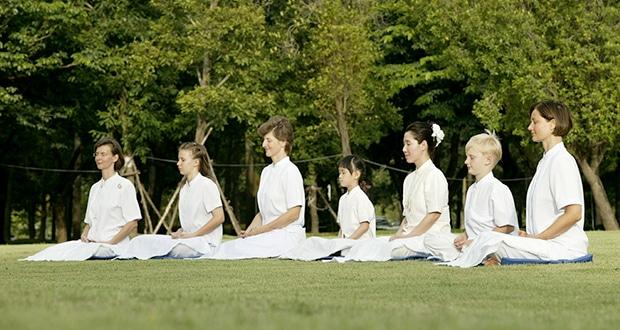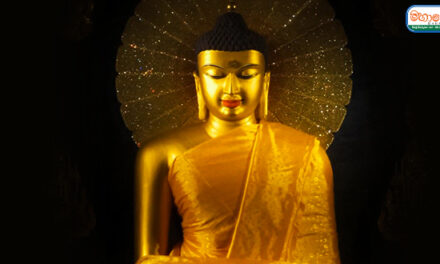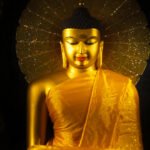Practicing the Dhamma is not an easy task. To gradually develop wholesome qualities in our minds is the most challenging undertaking in life. Why is this so? Because for a very long time, in this journey in saṃsāra with no discernible beginning, our minds have been habituated to the unwholesome. Therefore, to tread the Noble Eightfold Path to Nibbāna requires much patience, sustained dedication, and whole-hearted effort. Though we may be aware of these facts, still, we often have a nagging feeling of languor regarding the practice. The Buddha with his infinite wisdom understood this problem well; He understood why our minds incline toward listlessness and how to overcome slack effort by Right Effort (sammā vāyāma).
The Buddha startles us out of our mental slumbers by forcing us to confront the realities of life: that we will one day grow old; we will one day fall miserably ill; we will one day die, and that we have the propensity to be born again and again in the plane of misery where we will experience great suffering. Contrary to what critics claim as a pessimistic worldview, this outlook on life is not intended to convey melancholy or feelings of despair, nor does it call for stoic resignation in the face of suffering. Instead, the Buddha hands us these facts of life in order to convey a vital message, a message not of desolation or bleak pessimism, but a message that beckons to those who are mature in wisdom and willpower. His message of suffering comes as a shock to us for we usually are blind to these realities, caught up in the gratification of sensual pleasures.
This shock of waking up to the reality of suffering is called saṃvega in Pāli. Saṃvega is the spiritual emotion welling up with great force within a person when he or she is jolted, shocked by the realities of life; after the initial shock, comes a burning desire to overcome suffering, and following along is an attitude of earnest effort directed toward that goal. We can recall the Bodhisatta’s own experience of saṃvega when Prince Siddhārtha saw the Four Sights—the old man, the sick man, the corpse, and the monk—and the call to renunciation arose within him. This feeling of saṃvega arisen out of confrontation with and contemplation on the sufferings of life and saṃsāra serves as a source of energy in our practice of the Dhamma. We must put forth extraordinary effort to abandon the unwholesome and establish ourselves in the wholesome—to do that, it is immensely helpful to contemplate upon aging, sickness, death, sorrow, lamentation and the whole mass of suffering that is ever present in our lives.
Accordingly, in a series of beautiful similes, the Buddha explains four types of superior people, similar to thoroughbred horses, and how these people develop saṃvega in practice:
The first person hears that in some village or town a man or a woman is in misery or has died. He becomes stirred by this and saṃvega arises in him. He then strives on the path. Having strived resolutely, he realizes the supreme truth and attains Nibbāna. This superior person is similar to the excellent thoroughbred horse that is stirred and gains a feeling of saṃvega as soon as it sees the shadow of the goad thinking, “What sort of punishment will I receive from the trainer today? How am I going to do his bidding?” This is the first kind of excellent superior person.
The second person himself sees a man or a woman who is in misery or has died. He becomes stirred by this and saṃvega arises in him. He then strives on the path. Having strived resolutely, he realizes the supreme truth and attains Nibbāna. This superior person is similar to the excellent thoroughbred horse that is stirred and gains a feeling of saṃvega when the goad strikes its hairs thinking, “What sort of punishment will I receive from the trainer today? How am I going to do his bidding?” This is the second kind of excellent superior person.
The third person experiences the death or misery of a relative. He becomes stirred by this and saṃvega arises in him. He then strives on the path. Having strived resolutely, he realizes the supreme truth and attains Nibbāna. This superior person is similar to the excellent thoroughbred horse that is stirred and gains a feeling of saṃvega when its hide is struck by the goad, thinking, “What sort of punishment will I receive from the trainer today? How am I going to do his bidding?” This is the third kind of excellent superior person.
The fourth person experiences bodily feelings that are painful, racking, sharp, piercing, harrowing, disagreeable, sapping one’s vitality. He becomes stirred by this and saṃvega arises in him. He then strives on the path. Having strived resolutely, he realizes the supreme truth and attains Nibbāna. This superior person is similar to the excellent thoroughbred horse that is stirred and gains a feeling of saṃvega when its bone is struck by the goad thinking, “What sort of punishment will I receive from the trainer today? How am I going to do his bidding?” This is the fourth kind of excellent superior person.
These are the four kinds of superior persons found in the world.
Aṅguttara Nikāya Book of Fours – The Goad
(Assājānīya – Patoda Sutta)
From the above discourse, we can see how saṃvega is aroused in a disciple by confrontation with death or great misery. Having gained energy to practice the Dhamma with earnest efforts, like a thoroughbred horse spurred by the goad, those disciples with arisen saṃvega strive and ultimately realize “the supreme truth” of Nibbāna. In this way, contemplation on the mass of suffering that shadows us from the cradle to the grave does not seem like such a morbid subject, but rather an object for meditation that we should pursue in earnest—for contemplation on suffering makes one heedful in practicing to escape from suffering, which is following the Noble Eightfold Path.














Recent Comments